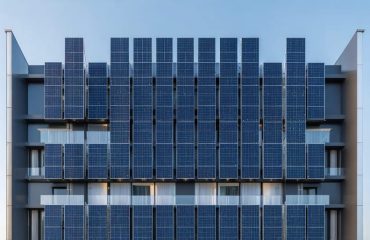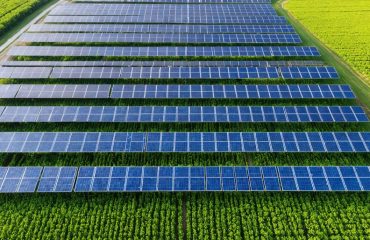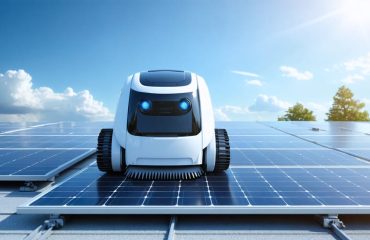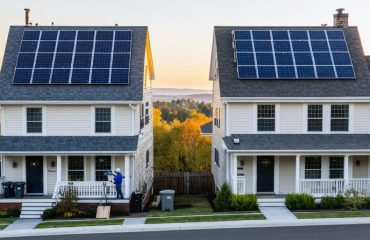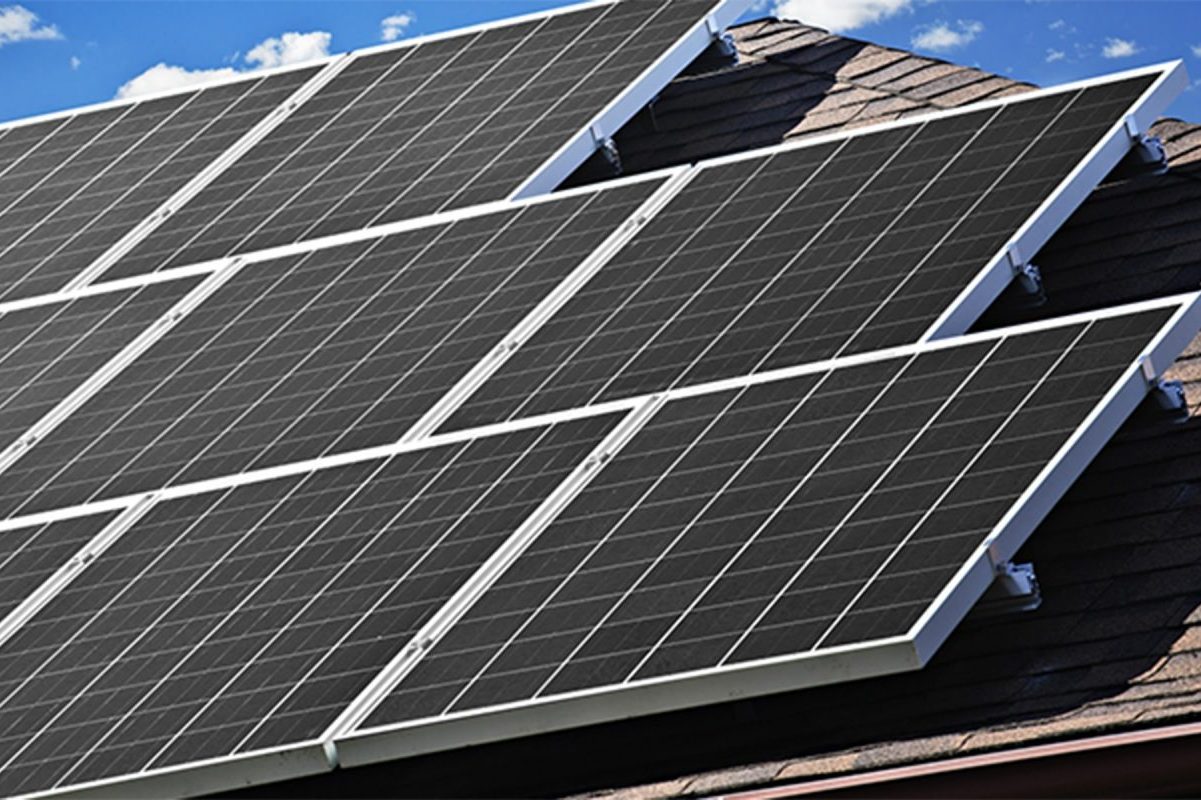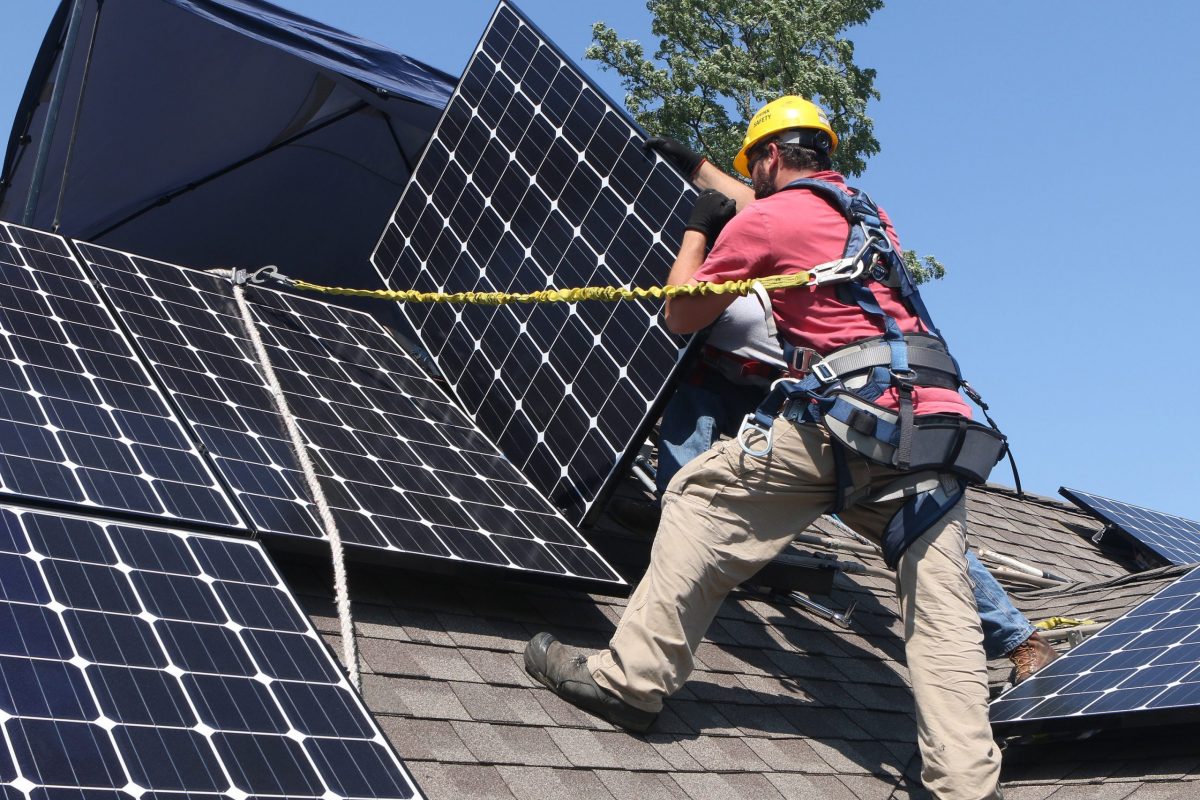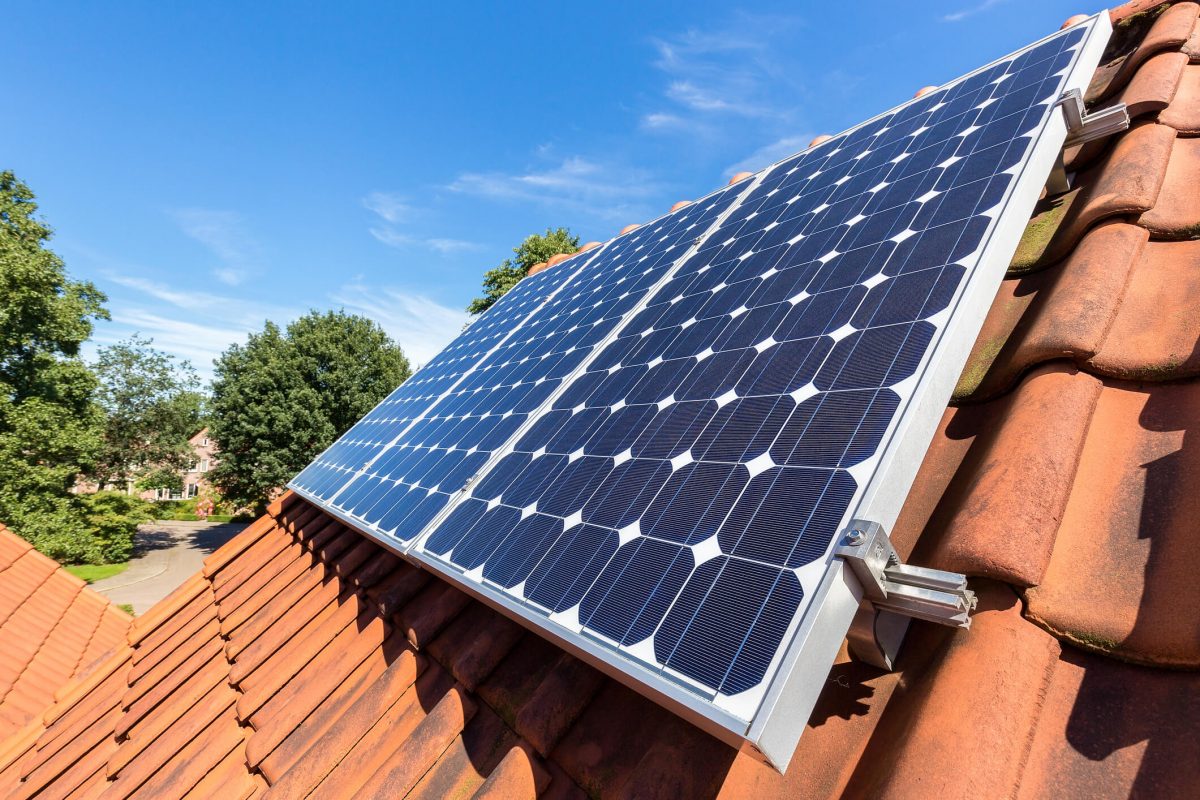Solar-powered agricultural equipment is revolutionizing modern farming by merging sustainable energy with traditional agricultural practices. As fossil fuel costs continue to rise and environmental concerns take center stage, farmers worldwide are discovering that solar-powered solutions offer both economic and ecological advantages. From solar-powered irrigation systems and automated greenhouse controls to electric tractors charged by photovoltaic arrays, these innovations are transforming how we cultivate food while reducing operational costs and carbon footprints.
The integration of solar technology into farming operations represents more than just an environmental choice – it’s a strategic business decision that can significantly reduce long-term operating expenses while increasing farm resilience. Solar-powered equipment operates independently of the grid, ensuring continuous operation during power outages and reducing dependency on traditional energy sources. This technology is particularly valuable in remote agricultural areas where access to conventional power sources may be limited or unreliable.
Today’s solar-powered agricultural solutions range from simple solar water pumps to sophisticated automated systems that can monitor soil moisture, control irrigation, and manage livestock feeding operations. These advancements not only improve operational efficiency but also demonstrate agriculture’s potential to lead the way in sustainable energy adoption.
The Evolution of Solar Power in Agriculture
From Simple Pumps to Smart Equipment
The journey of solar-powered farming equipment began in the 1970s with simple water pumping systems. These early innovations helped farmers access groundwater in remote locations without relying on grid electricity or diesel generators. As solar technology improved through the 1990s, we saw the emergence of more sophisticated irrigation systems that could adjust water flow based on soil moisture levels.
Today’s solar-powered agricultural equipment has evolved far beyond basic pumping systems. Modern farms use solar panels to power everything from automated greenhouse climate controls to robotic harvesting equipment. Smart sensors and monitoring systems run on solar power to track soil conditions, weather patterns, and crop health in real-time.
The most exciting developments have come in the past decade, with the introduction of autonomous solar-powered tractors and precision farming equipment. These machines can work independently, using GPS guidance and artificial intelligence to perform tasks like planting, weeding, and harvesting while running entirely on clean solar energy. This progression shows how far we’ve come from those first solar pumps, and hints at an even more innovative future in sustainable farming.
Today’s Solar-Powered Farm Technologies
Modern farms are increasingly embracing solar-powered solutions to enhance sustainability and reduce operational costs. From automated irrigation systems to electric tractors, today’s agricultural technology seamlessly integrates solar power into daily farming operations. Smart solar-powered sensors monitor soil conditions and weather patterns, allowing farmers to optimize resource usage. Some innovative farms are even implementing floating solar panels over irrigation ponds, maximizing land use while reducing water evaporation.
Solar-powered water pumps have become particularly popular, offering reliable irrigation solutions without dependency on grid electricity or fossil fuels. These systems are complemented by solar-powered greenhouse climate control systems that maintain optimal growing conditions year-round. Electric utility vehicles charged by solar arrays help farmers transport materials and equipment efficiently across their properties.
The integration of mobile apps and solar-powered monitoring systems allows farmers to manage their operations remotely, tracking everything from livestock location to crop health. These technologies not only improve productivity but also demonstrate how renewable energy can transform traditional farming practices into more sustainable and cost-effective operations.
Popular Solar-Powered Agricultural Equipment
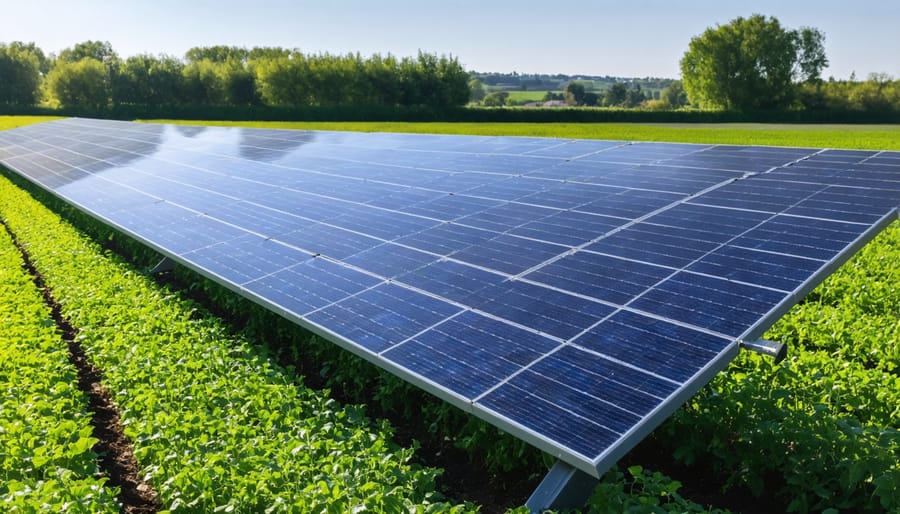
Irrigation Systems and Water Pumps
Solar-powered irrigation systems and water pumps represent one of the most practical applications of renewable energy in agriculture. These systems harness solar energy to power water pumps, providing reliable irrigation solutions while significantly reducing operational costs and environmental impact.
The core component of these systems is the solar-powered water pump, which uses photovoltaic panels to convert sunlight into electricity. This energy powers submersible or surface pumps that can draw water from wells, rivers, or reservoirs. Modern systems often include smart controllers that optimize water usage based on soil moisture levels and weather conditions.
Farmers can choose between direct solar pumping systems, which operate only during daylight hours, or battery-backed systems that provide continuous operation. While battery systems cost more initially, they offer consistent water supply regardless of weather conditions or time of day.
The benefits extend beyond energy savings. Solar irrigation systems require minimal maintenance, have long operational lifespans, and can be scaled to match specific farm needs. They’re particularly valuable in remote locations where grid electricity is unreliable or unavailable. Additionally, many regions offer incentives and rebates for installing solar-powered agricultural equipment, making the initial investment more manageable.
Greenhouse Climate Control
Solar-powered greenhouse climate control systems represent a significant advancement in sustainable agriculture, offering precise temperature and humidity management without relying on grid electricity. These systems typically combine solar panels with smart sensors and automated controls to maintain optimal growing conditions throughout the day and night. For greenhouses with limited roof space, vertical solar panel installations can be an effective solution for powering climate control equipment.
The heart of these systems includes solar-powered ventilation fans, misting systems, and thermal screens that work together to regulate the growing environment. Temperature control is achieved through automated vents and fans that activate based on real-time temperature readings, while humidity management relies on solar-powered dehumidifiers and misting systems that maintain optimal moisture levels.
Modern solar greenhouse systems also incorporate energy-efficient features like thermal mass storage, which captures excess heat during the day for nighttime temperature regulation. This approach significantly reduces the overall energy requirements while ensuring consistent growing conditions. Many systems now include smartphone integration, allowing farmers to monitor and adjust settings remotely, making it easier to maintain ideal growing conditions while maximizing energy efficiency.
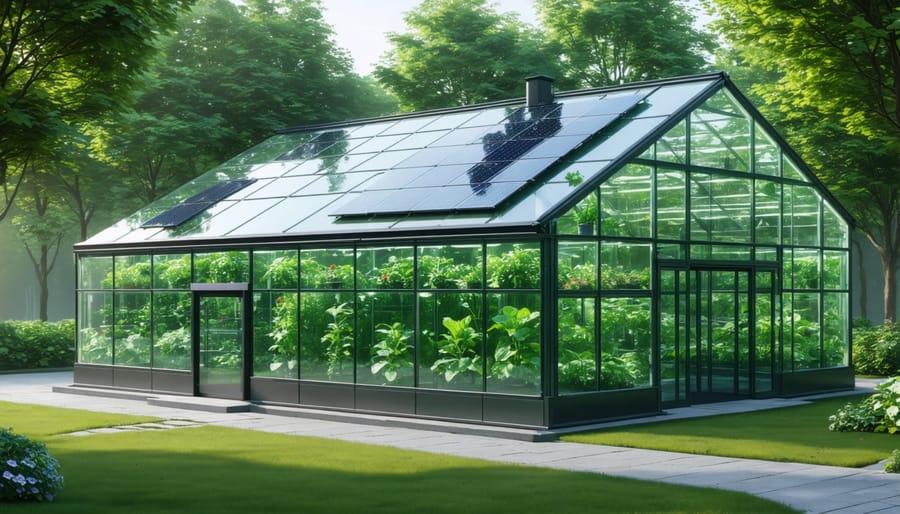
Electric Farm Vehicles and Tools
Modern farming has embraced electric vehicles and tools powered by solar energy, revolutionizing agricultural operations while reducing environmental impact. Electric tractors, equipped with solar-charged batteries, offer quiet operation and zero emissions, making them ideal for both small farms and large agricultural operations. These vehicles can work for several hours on a single charge and integrate seamlessly with solar lighting systems and other renewable infrastructure on the farm.
Popular solar-powered tools include irrigation pumps, crop monitoring drones, and automated harvesting equipment. These innovations not only reduce operating costs but also provide reliable performance in remote areas where grid power may be unreliable or unavailable. Electric utility vehicles (EUVs) designed for farm use can handle various tasks, from hauling supplies to transporting produce, while running purely on solar-charged batteries.
The transition to electric farm equipment offers immediate benefits: lower maintenance costs, reduced noise pollution, and elimination of fuel expenses. Many farmers report significant savings within the first year of switching to solar-powered vehicles and tools, making them an increasingly attractive option for sustainable agriculture.
Installation and Integration Guide
Planning Your Solar Setup
Before implementing solar-powered agricultural equipment, careful planning and assessment are essential for optimal results. Start by evaluating your farm’s energy requirements, considering both current needs and potential future expansion. This includes analyzing the power consumption of existing equipment and identifying which tools could benefit most from solar conversion.
A thorough site assessment is crucial for determining the best locations for solar-integrated design solutions. Consider factors such as sunlight exposure throughout the day, seasonal variations, and potential obstacles like trees or buildings that might cast shadows. The orientation and angle of solar panels significantly impact their efficiency, so proper positioning is key.
Calculate your available space for solar installations, keeping in mind that different equipment may require varying amounts of power. This might influence whether you opt for ground-mounted arrays, roof installations, or portable solar units. Remember to factor in storage solutions for excess energy, as agricultural operations often require power during non-daylight hours.
Budget considerations should include initial installation costs, potential tax incentives, and long-term maintenance requirements. Many farmers find it beneficial to start with smaller solar implementations and gradually scale up as they see returns on their investment. This approach allows for better risk management and helps in understanding the practical aspects of solar-powered equipment before making larger commitments.
Don’t forget to check local regulations and permit requirements for solar installations on agricultural land. Working with experienced solar contractors who understand agricultural applications can help ensure your setup meets both compliance standards and operational needs while maximizing energy efficiency.
Maintenance and Optimization
Regular maintenance of solar-powered agricultural equipment is essential for maximizing efficiency and extending its operational life. Start by keeping solar panels clean from dust, debris, and bird droppings, which can significantly reduce energy absorption. A simple monthly cleaning with water and a soft brush is usually sufficient, though you may need to clean more frequently during dry or dusty seasons.
Check electrical connections quarterly for signs of corrosion or loose wiring, as these issues can impact performance and potentially create safety hazards. Battery systems require particular attention – monitor charge levels regularly and ensure proper ventilation around battery storage areas. Most modern systems come with monitoring apps or displays that help track performance metrics, making it easier to spot potential issues early.
Optimize your equipment’s performance by adjusting panel angles seasonally. This simple adjustment can increase energy collection by up to 25%. Consider installing tracking systems that automatically adjust panel positions throughout the day, though remember these require additional maintenance themselves.
Keep detailed maintenance records and schedule professional inspections annually. These checks should include testing inverter efficiency, examining structural integrity, and verifying all safety systems are functioning correctly. Many manufacturers offer maintenance contracts that can simplify this process.
For equipment used in field operations, pay special attention to moving parts and ensure they’re properly lubricated. Solar-powered irrigation systems benefit from regular filter cleaning and pipe inspection to prevent clogs and maintain optimal water flow. During winter months in colder regions, remember to drain water from systems to prevent freeze damage.
Financial Benefits and ROI
Investing in solar-powered agricultural equipment offers substantial financial returns that extend well beyond the initial purchase cost. While the upfront investment may be higher compared to conventional equipment, farmers typically see a return on investment within 3-5 years through reduced operational costs.
The most immediate benefit comes from eliminated fuel expenses. A solar-powered irrigation system, for example, can save farmers an average of $2,000-$3,000 annually in diesel or electricity costs. These savings compound over time, especially considering that fuel prices continue to rise while solar equipment costs decrease.
Maintenance costs are also significantly lower for solar-powered equipment. With fewer moving parts and no need for regular fuel-related maintenance, farmers can save 40-60% on annual maintenance expenses. Solar equipment typically lasts 20-25 years, offering predictable operational costs throughout its lifetime.
Government incentives and tax credits further enhance the financial appeal. Many regions offer agricultural solar incentives that can cover up to 30% of the initial investment. Additionally, some equipment qualifies for accelerated depreciation, providing immediate tax benefits.
Long-term financial planning becomes more stable with solar equipment, as operating costs remain consistent regardless of energy market fluctuations. This predictability allows farmers to better manage their budgets and invest in other areas of their operations. When considering the total lifecycle cost, solar-powered agricultural equipment often proves to be the more economical choice, offering both environmental and financial sustainability.
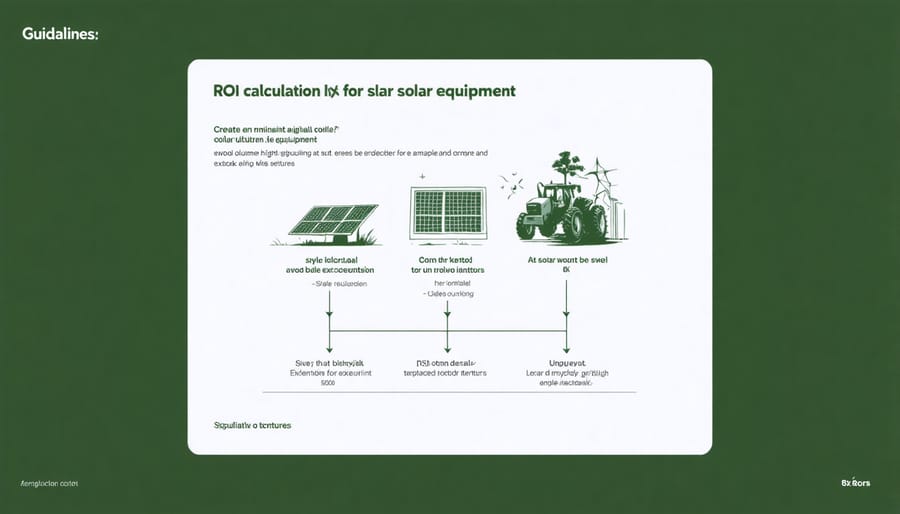
Solar-powered agricultural equipment represents a revolutionary step toward sustainable farming practices, offering both environmental and economic advantages. By harnessing clean, renewable energy, farmers can significantly reduce their operational costs while minimizing their carbon footprint. The future outlook for solar-powered farming equipment is particularly promising, with advancing technology making these solutions more efficient and affordable each year. As battery storage technology improves and equipment becomes more sophisticated, we can expect to see wider adoption across both small-scale and commercial farming operations. The combination of government incentives, decreasing installation costs, and increasing energy prices makes the transition to solar-powered equipment an increasingly attractive option for forward-thinking farmers. With the agricultural sector embracing this green technology, we’re moving closer to a more sustainable and environmentally responsible farming future.


